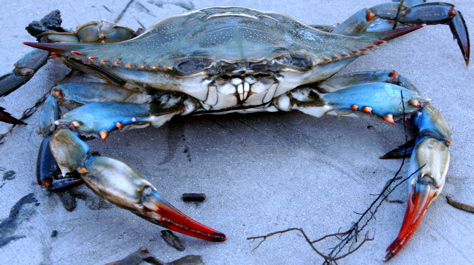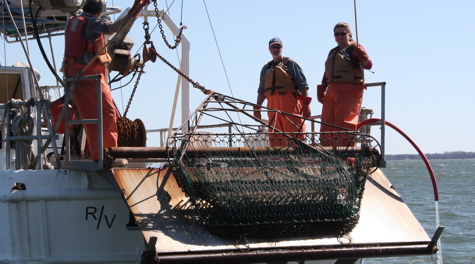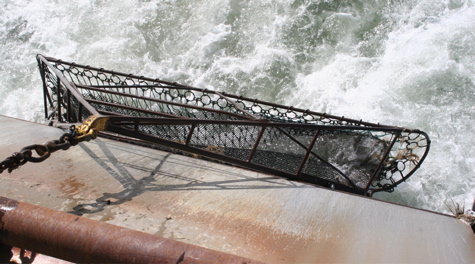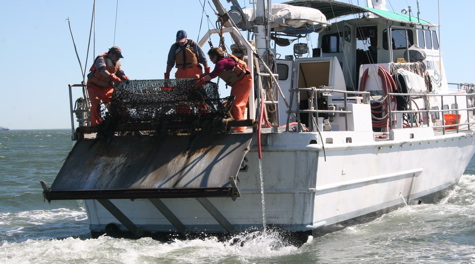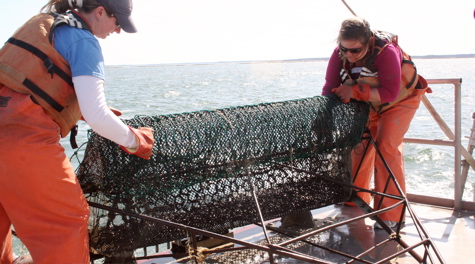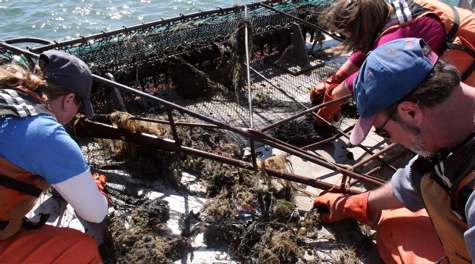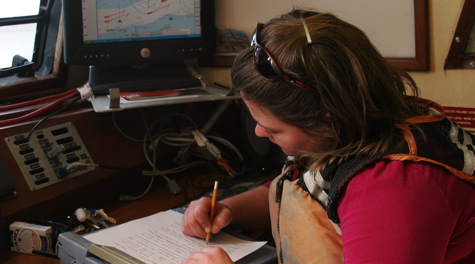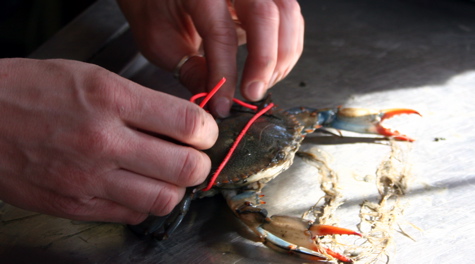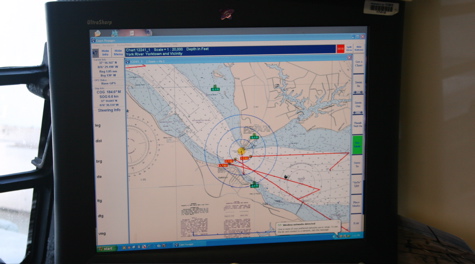Chesapeake Bay blue crab population reaches near 20-year high
Stock hits highest level since 1993; 66% increase above 2011 numbers
Data from the 2011-12 Blue Crab Winter Dredge Survey show that the Chesapeake Bay’s blue crab population is booming, fueled by a large increase in juvenile crab abundance. The results were announced today in a press release issued by Virginia Governor Bob McDonnell and Maryland Governor Martin O’Malley.
The baywide survey is conducted annually by the Virginia Institute of Marine Science (VIMS) and the Maryland Department of Natural Resources (DNR).
Survey results show that the total population of blue crabs in Chesapeake Bay has reached 764 million, due to 4 years of a baywide stock-rebuilding program.
This is a 66% increase above the 2011 abundance level of 460 million crabs, and is the highest level recorded since 1993. The baywide blue crab stock abundance is now more than triple the record low of 249 million, set in 2007, the year before the stock-rebuilding program began.
In a press release, Virginia Governor Bob McDonnell said “This is fantastic news. The crab population is the highest it has been in the past 20 years, and to see this record production of juveniles is truly remarkable. Those crabs will grow over the summer and many will reach market size in the fall. Those that aren’t harvested and brought to the dinner table will become the building blocks for future generations of crabs.”
He added, “I want to applaud all those who have worked to make this incredible progress possible, including my predecessor Governor Tim Kaine and his Administration, and Governor O’Malley and his Administration in Annapolis. This is a bipartisan success story."
Governor O’Malley said “Just a few short years ago, the future did not look bright for our blue crab population. Our female crabs were being overfished, and our fishery was at risk of complete collapse. We teamed up with our neighbors in Virginia and at the Potomac River Fisheries Commission to make the tough choices, guided by science, to reverse that population decline."
Baby Boom
The new survey shows this year’s increase in crab abundance is the result of a massive baywide baby boom—an almost tripling of the number of juvenile crabs from 207 million last year to 587 million. Juvenile crab abundance has never been recorded at such high levels and the new record obliterated the old record of 512 million juveniles established in 1993.
Baywide, the crab harvest has increased substantially since 2008, from 43 million pounds to a preliminary estimate of 67.3 million pounds during 2011.
Cautionary Note
The winter dredge survey results sounded one important cautionary note.
The number of spawning age females recorded by the survey dropped by roughly 50% from 2011 levels, down to 97 million. But that level remains above the healthy-species threshold, and these types of fluctuations are neither unprecedented nor unexpected in the winter dredge survey.
Spawning age females are the cornerstone of the joint Virginia-Maryland stock rebuilding program. A NOAA-funded stock assessment last year established a healthy-species target abundance of 215 million adult female crabs, with a harvest target of 25.5%. Overfishing would be occurring if more than 34% of the female crabs were harvested in a year, and the stock would be considered overfished if the abundance of females were to drop below 70 million crabs.
This year’s spawning age female level is not unusually low. In fact, it is near or above the levels recorded in 14 of the past 19 years.
Effects of Warm Winter
Scientists are exploring the possibility that unusually warm water temperatures over the winter may have played a role in the 2012 results by altering the crab’s overwintering behavior and, as a result, the animal’s availability to the survey gear. According to NOAA’s Chesapeake Bay Office, surface waters in Chesapeake Bay were 7 degrees above long-term averages in mid-March 2012. Also, the National Estuarine Research Reserve site at the Goodwin Islands (near the mouth of the York River) showed bottom temperatures for December to March about 4 degrees warmer than the previous 5-year average.
Professor Rom Lipcius, head of the Winter Blue Crab Dredge Survey at VIMS, says “The recorded number of spawning age females is a warning signal that requires a risk-averse, prudent management strategy to avert another decline." Crab abundance had declined by 70% before the baywide stock-rebuilding program began in 2008.
Fishery managers may learn more about the baywide spawning age female crab levels this summer. VIMS’ and Maryland’s summer crab trawl surveys—which track mid-season trends in blue crab abundance, carapace width, and weight—should provide additional sources of information on the quantity of adult female crabs.
Blue Crab Winter Dredge Survey
The winter dredge survey methodology has been unchanged since 1990: scientists at VIMS and with the Maryland DNR deploy the dredge in 1,500 locations throughout the Bay in the winter, when crabs normally are buried in the mud and stationary. The crabs are dredged from the bottom, counted, and measured. After the sex is recorded, mature crabs are tagged and returned to the water.
The Virginia Marine Resources Commission will present the latest winter dredge survey findings to its Crab Management Advisory Committee later this week for 2 months of review, and recommendations on the 2012 crab season regulations. The Commission is expected to hold a public hearing and vote on the crab regulations in June.

